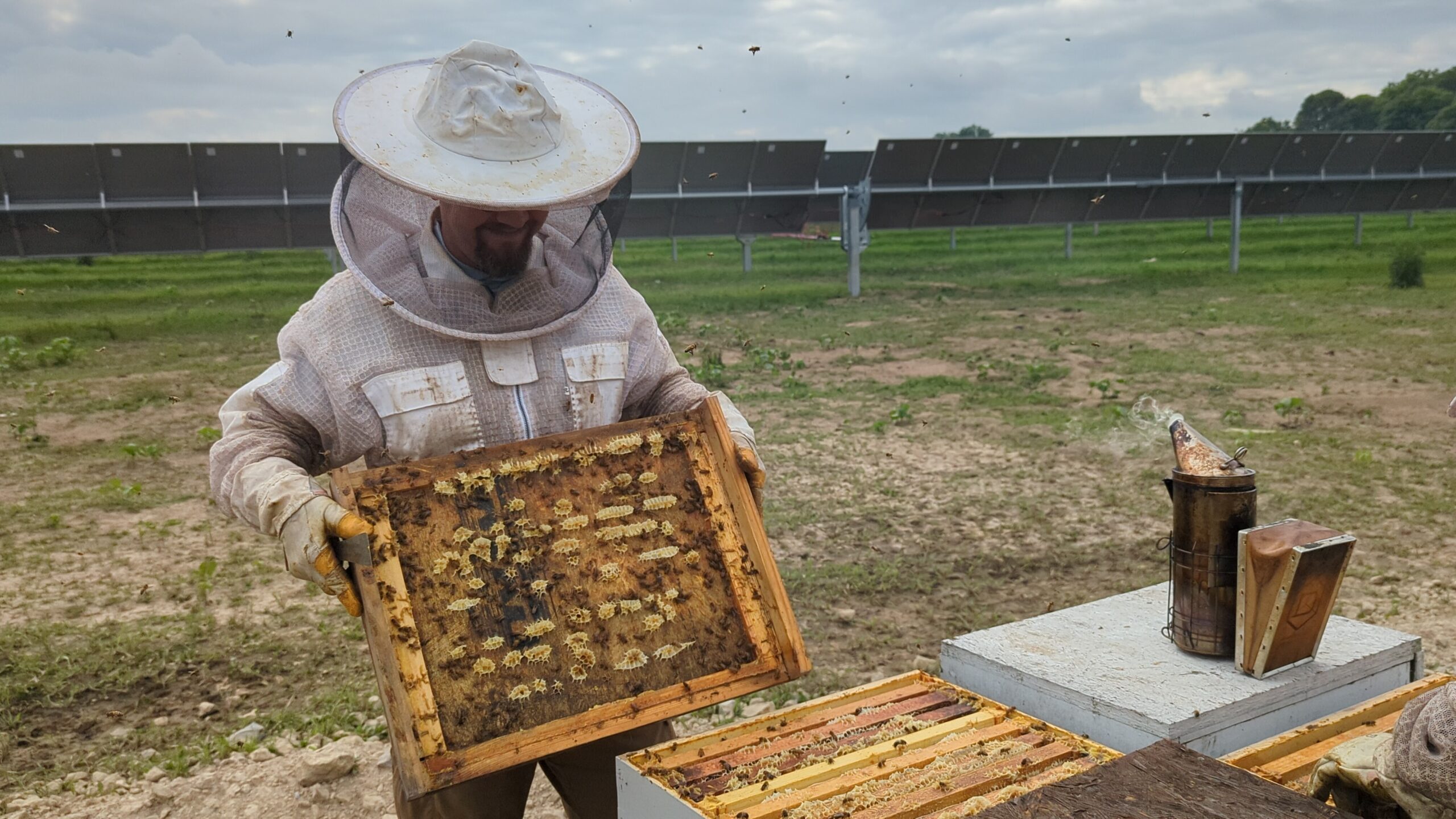Solar honey
Harvesting sunshine and honey with our solar farm bees
Our solar farms provide a SWEET opportunity for honey producers. We plant wildflowers under and around the solar panels, providing high quality habitat to support healthy and productive honeybees.
Lightsource bp solar farms serve as safe, long-term homes for pollinators, often integrating agricultural practices like beekeeping to layer on additional environmental and agricultural benefits.

Pollinator populations are declining, but solar farms can help!
Pollinators like bees and butterflies are tiny but mighty creatures. They provide an incredible service, with three-fourths of the world’s flowering plants and about 35 percent of the world’s food crops depending on pollinators to reproduce, according to the USDA.
Unfortunately, pollinator populations have been on the decline due to major challenges like habitat loss. As part of our Responsible Solar ethos, we are committed to increasing biodiversity at our solar projects and creating habitats for a variety and abundance of species, including honeybees. We carefully curate customized seed mixes and other vegetation so that our solar farms can serve as protected homes for pollinators and other wildlife under our biodiversity framework.
Adding pollinator habitat to solar farms

Solar farms offer the perfect space for pollinators to thrive because the farms secure vital pollinator habitat. A recent study by Argonne National Laboratory has shown increases in the abundance and diversity of plants, flowers and native insect pollinators at solar farms with pollinator plantings in less than five years – a win-win!
The study found that solar farms with habitat restoration can significantly boost populations of pollinator insects on the land, with native bees showing a 20-fold increase on their test sites. They also found that the insects visited nearby crop fields providing pollination and making the neighboring farmland more productive. The researchers concluded that these findings “provide support for solar-pollinator habitat as a feasible conservation practice to safeguard biodiversity and increase food security in agricultural landscapes.”
Beekeeping at our solar farms
Incorporating beekeeping at solar farms not only strengthens important ecosystems but also supports U.S. agriculture. Co-locating hives at solar farms enables bees to collect the flower nectar they need, while pollinating flowers and vegetation, to then produce sweet solar honey.
According to the USDA, U.S. honey production has declined over the last several decades, while honey imports have only continued to grow. In the U.S., over 70% of the honey we consume is imported. But solar farms offer an opportunity to support and grow our U.S. honey industry.
By planting pollinator friendly habitat, solar farms can serve as safe, stable homes for honeybees. Lightsource bp works directly with local beekeepers and private beekeeping businesses to locate hives at our solar farms. This serves as a way to keep the land in agriculture while also supporting America’s homegrown honey industry.
We currently have honey operations at both our Briar Creek solar farm in Texas and our Bellflower solar farm in Indiana.

More pollinator stories from Lightsource bp
03 Sep, 2024
Solar Synergy in Indiana: Our Bee & Butterfly Habitat Fund partnership at Honeysuckle Solar
Partnership for pollinator conservation


